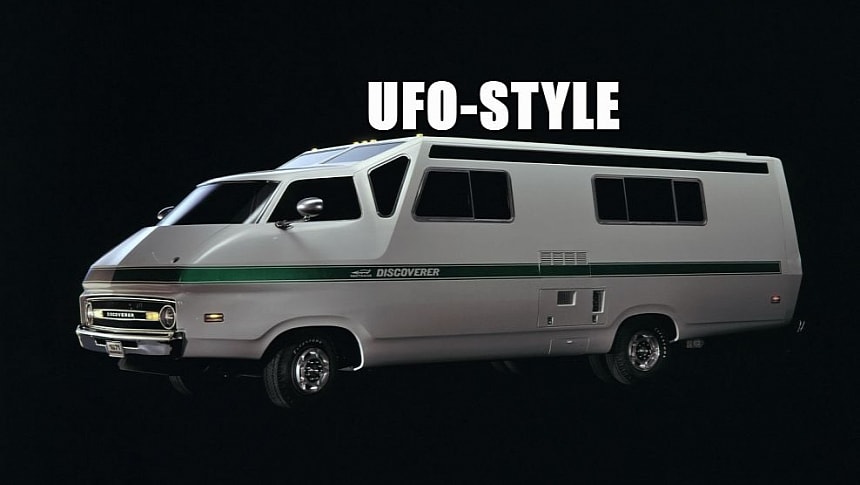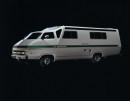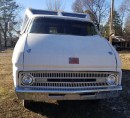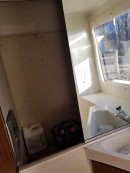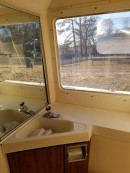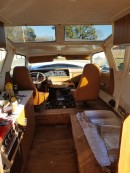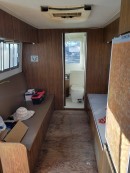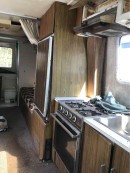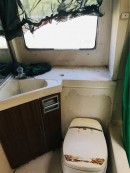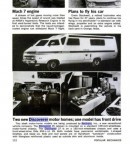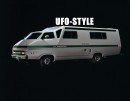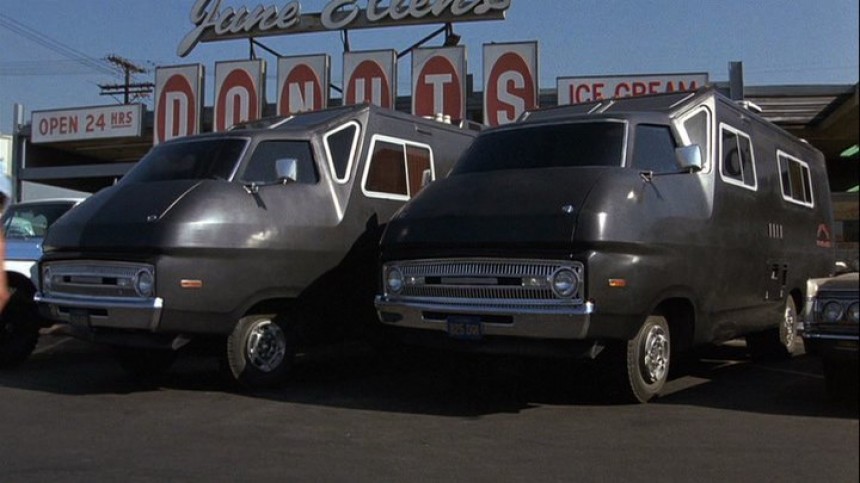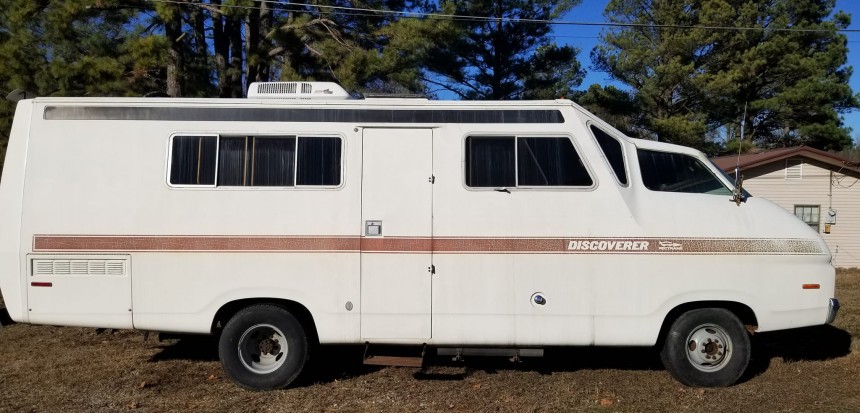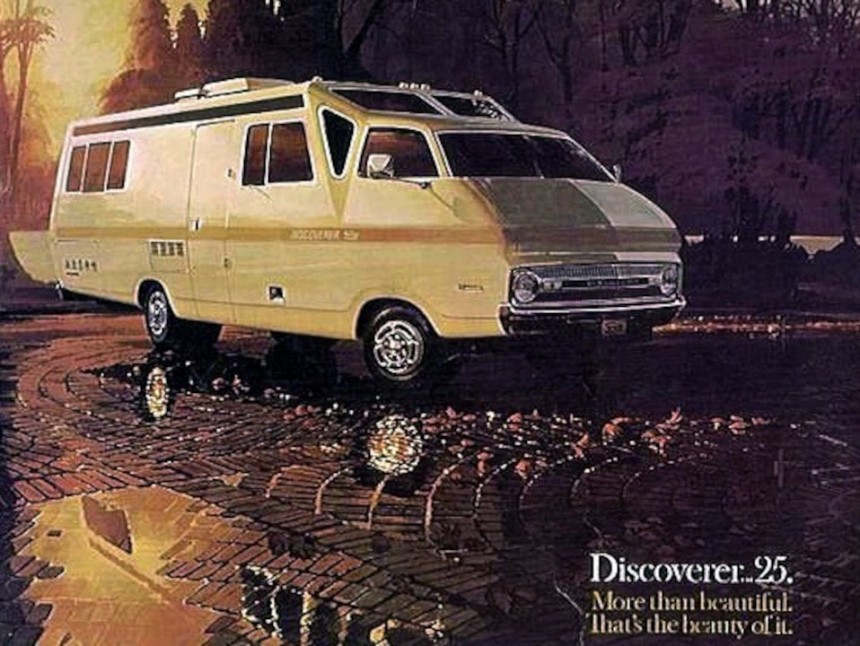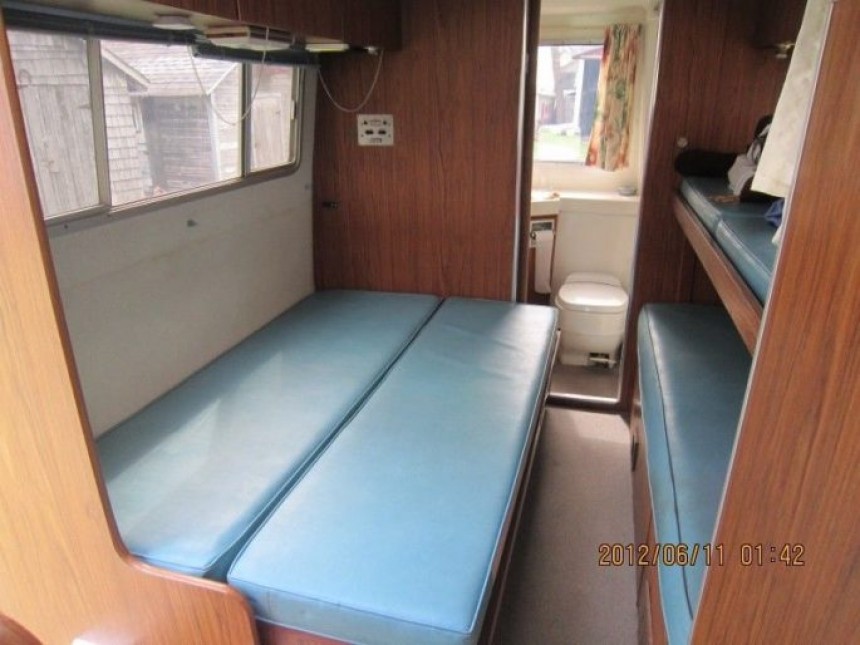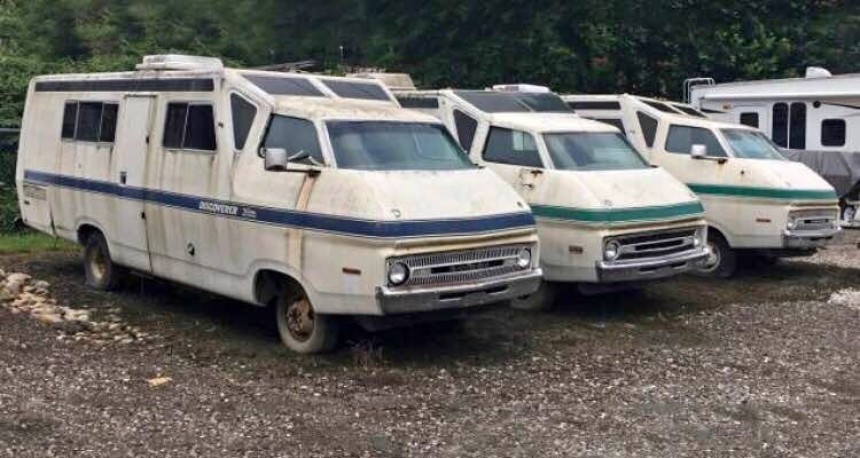Beauty is in the eye of the beholder and all that, but even with this balanced, reasonable approach, you still have to admit that there are things in the world that would hardly ever qualify for this descriptor. The Rectrans Discoverer RV is arguably one of those things.
At best described as "so ugly it's beautiful" and at worst labeled the strangest-looking or even the ugliest motorhome to have ever existed, the Rectrans Discoverer is also credited with shaping the history of the motorhome by being the first RV to be tunnel-tested for improved aerodynamics. That's a pretty big boast right there, and it's not the only one this UFO-shaped motorhome has up its sleeve.
Rectrans had a very short lifespan as a company, with the main factory in Brighton, Michigan, burning down to a crisp after it was struck by lightning just as the entire business was about to go under. This happened just four years after it was founded by ex-Ford Motor Company boss Binkie Knudsen and designer Larry Shinoda.
The two had worked together at Ford, with Shinoda penning the 1969 Mustang Boss 302 under Knudsen. Of course, Shinoda is famous for many other iconic designs, including the C2 and C3 Corvette, the Ford Torino King Cobra, and the Jeep Grand Cherokee (ZJ), which makes the Discoverer his least famous creation.
It's not without its merits, though.
When Shinoda and Knudsen started out on the RV sector, they aimed for very specific goals: a 10,000-lb (4,539-kg) motorhome that would be both luxurious and affordable, that would get excellent fuel efficiency of 10 mpg (23.52 l/100km), and that would be fast. The first model was the Discoverer 25, which was introduced in 1971 and remained in production until 1974 when the fire put an end to the Rectrans business for good.
According to documentation available online, the duo planned variations on the Discoverer in the Discoverer 22 and Discoverer 27, but whether they ever carried the plans through is uncertain. Urban legend has it that some Discoverer 22s were built, but that, too, is uncertain.
Production of the flagship model, the 25, was of 3,300 units, give or take a few, many of which survive to this day due to the rust-resistant fiberglass shell.
The Discoverer 25 sits on a Dodge M-300 chassis and uses a 413-cu-in Chrysler RB big-block V8 engine making some 265 hp. In the design of the shell, Shinoda took a function-over-form approach. He used his 1:25 scale model for wind tunnel testing and adapted the final design accordingly. The focus on aerodynamics resulted in this strange, UFO-like design, the absence of doors (there's only one entry door located in the middle of the vehicle), and the bulbous front end.
The interior could sleep as many as six people in three berths and included a galley and a pretty sizable bathroom. Every feature necessary for a comfortable family vacation was there, from the cooking stove and fridge to a fiberglass shower, a toilet, a 40-gallon (151.4-liter) freshwater tank, and a similarly-sized holding tank.
The 25-foot-long (7.62 meters) RV also had a 22,000 BTU forced air furnace and a 12,000 BTU roof AC, while the cockpit was advertised as being inspired by a sports car.
The Rectrans Discoverer 25 even had the Thetford Thermasan waste disposal system installed, which was so popular back in the day. The Thermasan would burn the waste using exhaust, with the system kicking in at speeds of over 35 mph (56 kph).
The Discoverer 25 couldn't get the under-10 mpg efficiency the duo aimed for, but it was the closest thing, at a little over 10 mpg. However, it boasted an acceleration time of 0 to 60 of just 11 seconds, which was yet another first at the time. The fiberglass shell was lightweight enough to advertise it as an efficient option compared to other motorhomes of its size.
Famous examples of the Discoverer exist, just like there is an impressive number of survivors. The 1973 film Slither with James Caan and Peter Boiler featured not one but two 1973 models painted all black. It's perhaps the strangest choice for a villain's car, but it worked for that period.
Artist Henry Gerson of Daytona Airbrush used to drive an airbrushed Discoverer in the '90s as his mobile studio. Another Discoverer, this time heavily modified, was spotted last summer in Humboldt County as a steampunk-themed rolling tattoo studio. It's truly the most magical steampunk ride you can ever imagine, as the Instagram embed below can confirm.
As for survivors, they abound, although their condition leaves a lot to be desired. A trio of similar Discoverer 25, a '71 and two '72 models, is now being offered for sale out of Monaca, PA, as project cars. One media outlet notes that the same trio of RVs has been on and off the market for at least the past five years, and the reason they failed to sell might have something to do with the seller's desire to sell them as a lot.
The current asking is $1,500, which is way under the initial asking of $7,000 from a few years ago and very cheap for three RVs. But a simple look at them and the listing will tell you that they no longer run or drive, so they require transport – as well as extensive TLC to be brought back to their former glory.
For those of you who are not looking for their next project vehicle and whatever expense that entails, the Rectrans Discoverer 25, with its ungainly and unconventional design, is an icon of the '70s that deserves to be remembered. Not because it was ugly but because it put function over form and, in the process, achieved its mission.
Rectrans had a very short lifespan as a company, with the main factory in Brighton, Michigan, burning down to a crisp after it was struck by lightning just as the entire business was about to go under. This happened just four years after it was founded by ex-Ford Motor Company boss Binkie Knudsen and designer Larry Shinoda.
The two had worked together at Ford, with Shinoda penning the 1969 Mustang Boss 302 under Knudsen. Of course, Shinoda is famous for many other iconic designs, including the C2 and C3 Corvette, the Ford Torino King Cobra, and the Jeep Grand Cherokee (ZJ), which makes the Discoverer his least famous creation.
When Shinoda and Knudsen started out on the RV sector, they aimed for very specific goals: a 10,000-lb (4,539-kg) motorhome that would be both luxurious and affordable, that would get excellent fuel efficiency of 10 mpg (23.52 l/100km), and that would be fast. The first model was the Discoverer 25, which was introduced in 1971 and remained in production until 1974 when the fire put an end to the Rectrans business for good.
According to documentation available online, the duo planned variations on the Discoverer in the Discoverer 22 and Discoverer 27, but whether they ever carried the plans through is uncertain. Urban legend has it that some Discoverer 22s were built, but that, too, is uncertain.
The Discoverer 25 sits on a Dodge M-300 chassis and uses a 413-cu-in Chrysler RB big-block V8 engine making some 265 hp. In the design of the shell, Shinoda took a function-over-form approach. He used his 1:25 scale model for wind tunnel testing and adapted the final design accordingly. The focus on aerodynamics resulted in this strange, UFO-like design, the absence of doors (there's only one entry door located in the middle of the vehicle), and the bulbous front end.
The interior could sleep as many as six people in three berths and included a galley and a pretty sizable bathroom. Every feature necessary for a comfortable family vacation was there, from the cooking stove and fridge to a fiberglass shower, a toilet, a 40-gallon (151.4-liter) freshwater tank, and a similarly-sized holding tank.
The Rectrans Discoverer 25 even had the Thetford Thermasan waste disposal system installed, which was so popular back in the day. The Thermasan would burn the waste using exhaust, with the system kicking in at speeds of over 35 mph (56 kph).
The Discoverer 25 couldn't get the under-10 mpg efficiency the duo aimed for, but it was the closest thing, at a little over 10 mpg. However, it boasted an acceleration time of 0 to 60 of just 11 seconds, which was yet another first at the time. The fiberglass shell was lightweight enough to advertise it as an efficient option compared to other motorhomes of its size.
Artist Henry Gerson of Daytona Airbrush used to drive an airbrushed Discoverer in the '90s as his mobile studio. Another Discoverer, this time heavily modified, was spotted last summer in Humboldt County as a steampunk-themed rolling tattoo studio. It's truly the most magical steampunk ride you can ever imagine, as the Instagram embed below can confirm.
As for survivors, they abound, although their condition leaves a lot to be desired. A trio of similar Discoverer 25, a '71 and two '72 models, is now being offered for sale out of Monaca, PA, as project cars. One media outlet notes that the same trio of RVs has been on and off the market for at least the past five years, and the reason they failed to sell might have something to do with the seller's desire to sell them as a lot.
For those of you who are not looking for their next project vehicle and whatever expense that entails, the Rectrans Discoverer 25, with its ungainly and unconventional design, is an icon of the '70s that deserves to be remembered. Not because it was ugly but because it put function over form and, in the process, achieved its mission.
